These posts are not for foraging. They are intended for entertainment and intellectual satisfaction only. These posts are not a field guide nor comprehensive in any way - their accuracy is not assured in any way. Do not eat wild mushrooms unless you are a professional, have substantial professional assistance or have a wealth of personal experience with a specific species. Do not make any foraging decisions based on these posts. To do so could be dangerous or life threatening.
This one post does mention toxicity in order to illustrate the importance of being 100% certain in your ID before eating a wild mushroom. Cutting corners can be immensely dangerous.
Edit: I just realized it is not Tuesday! Sorry for the early post! See you as normal on Friday!
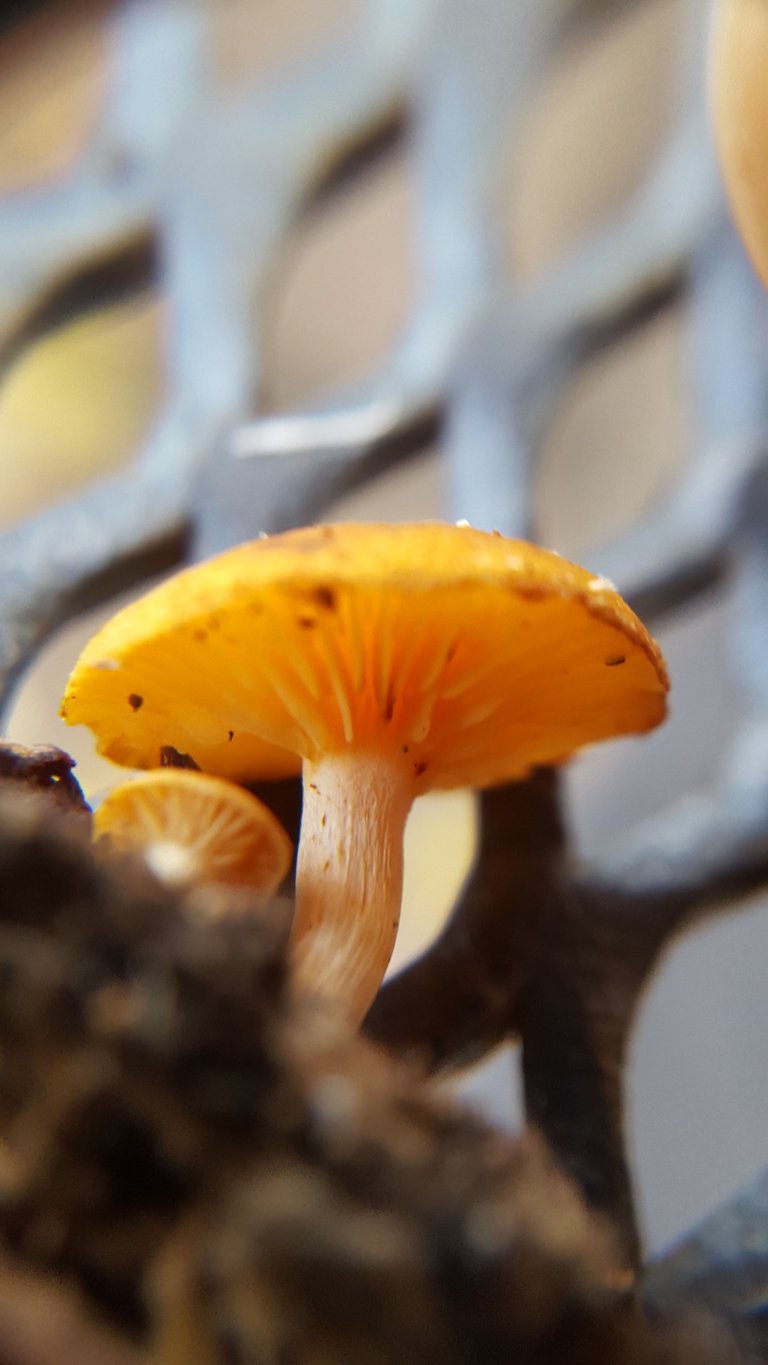
These small yellow/orangish mushrooms present a problem.
When I first found them I thought their ID would be fairly straightforward. They were growing sparsely with a pretty specific look and if the spore print came out the way I anticipated, I thought I already had a good guess as to their species - young F.velutipes.
But in analyzing the mushroom in more detail, things fell apart. First, they failed to produce a print, which could happen for several reasons - too old, too young, too dry. Second, the traits that I could see seemed to point disparately in several directions at once.
The result is, practically, a complete failure of identification. I do not know what kind of mushroom this is. However, even a failed ID Is a teachable moment, and I wanted to take the opportunity to address how easy it is to make a potentially fatal mistake.
So let's go through this mushroom step by step and see where we can get led astray by our assumptions or wishful thinking, and how hard it can be to acknowledge how little we really know.
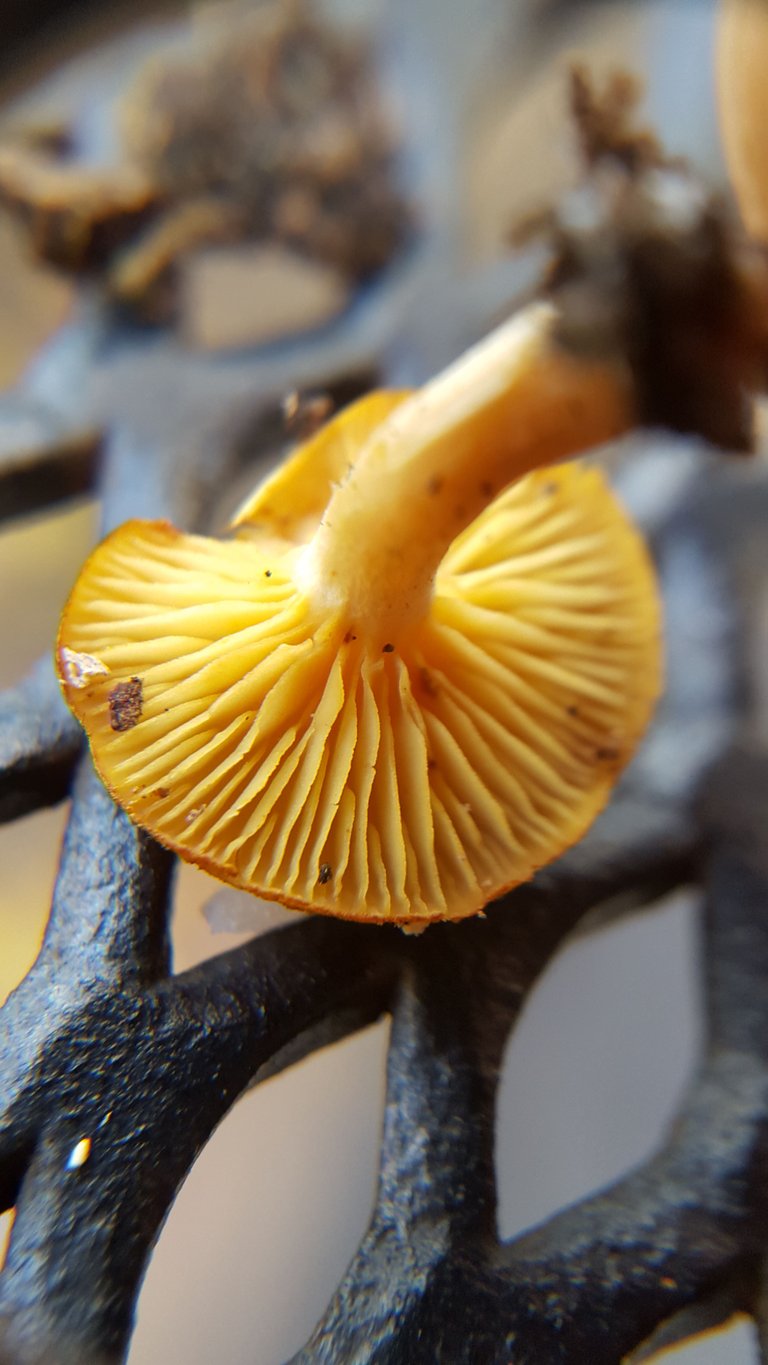
The bright slightly orangish yellow color continues on the slightly lighter gills as well and down the stem.
This cap was about 2-3cm across and the largest of several I found growing on a single small log. The growth pattern isn't pictured in this post because the photos came out poorly, but it was only three or four caps growing a couple of CM or so from eachother.
Already we have a lot of information here and it led me to make a strong, but at this point unfounded assumption. Let's lay it out:
- Bright yellow orangish cap and gills
- Similarly colored stem without an annulus
- Small in size and growing in late fall
- Saprobic growing on dead hardwood
My instinct said Flammulina velutipes, the velvet foot. One big problem with this is the lack of the fuzzy brown velvetiness on the bottom of the stem for which F.velutipes is famous. But some online resources show a lack of that feature.
Another problem was the growth pattern, as F.velutipes frequently grow in large, robust clusters and these were pretty sparsely distributed. However, this too is fairly variable in F. Velutipes.
Despite some mixed signals, I've connected this mushroom in my mind already with a specific species. The result is a kind of unconscious bias towards that species. Having come into the start of this process with an assumption, it becomes easy to interpret variables in the specimen in ways that are consistent with the species in my mind. This is dangerous. Let's continue.
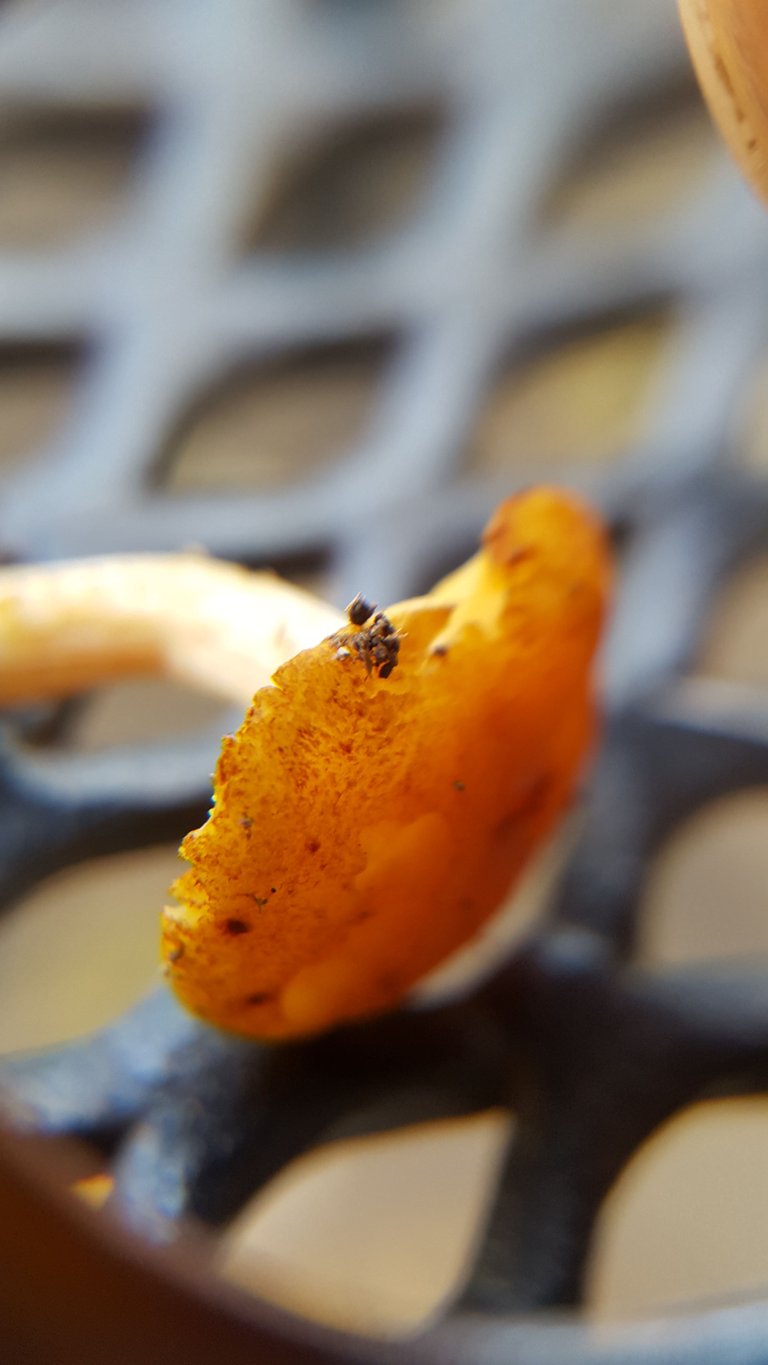
Bit of a macro close up of the cap.
You can see that there is some small darkening spots, almost scaly but not quite, that are a darker orange color. There is also a bit of detritus stuck to the cap. The overall appearance of the cap was glabrous, or smooth looking, but not slimy or wet.
However that piece of detritus and my presupposition that this was F.velutipes made me pretty sure it had once been wet or slimy - another assumption.
Take a look at the cap from a slightly greater distance
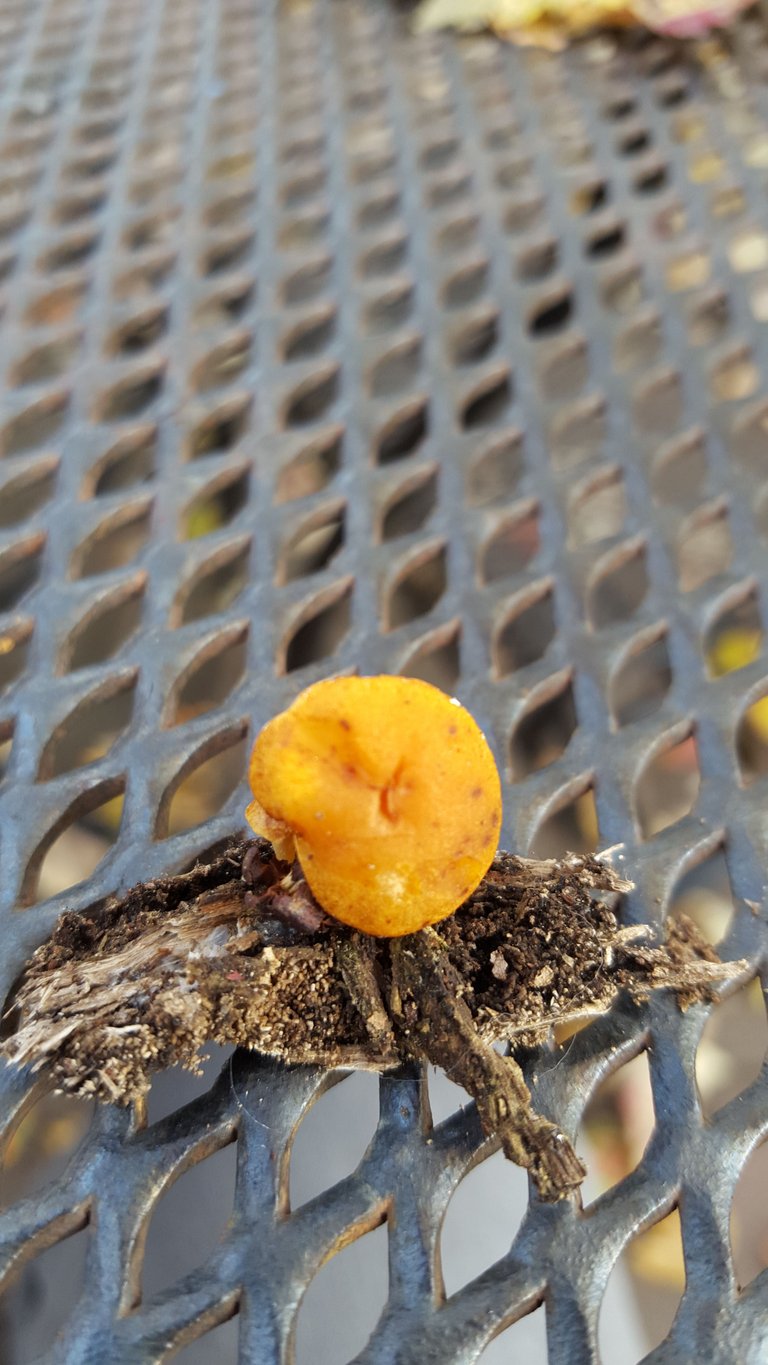
That cap, from that angle starts the real questions going.
Go and google F.velutipes, or click one of the citations below, and you will see caps that look sort of like this one, and others that do not. But, then go and search for Galerina marginata, or click on the citations below, you can also see caps that look totally different and also similar. The latter also seems less likely to grow in large very tight clusters.
Already we have traits that militate in multiple directions. The problem for the hunter of mushrooms for culinary purposes is that F.velutipes is edible, but G.marginata is deadly poisonous.
Things don't get clearer from here.
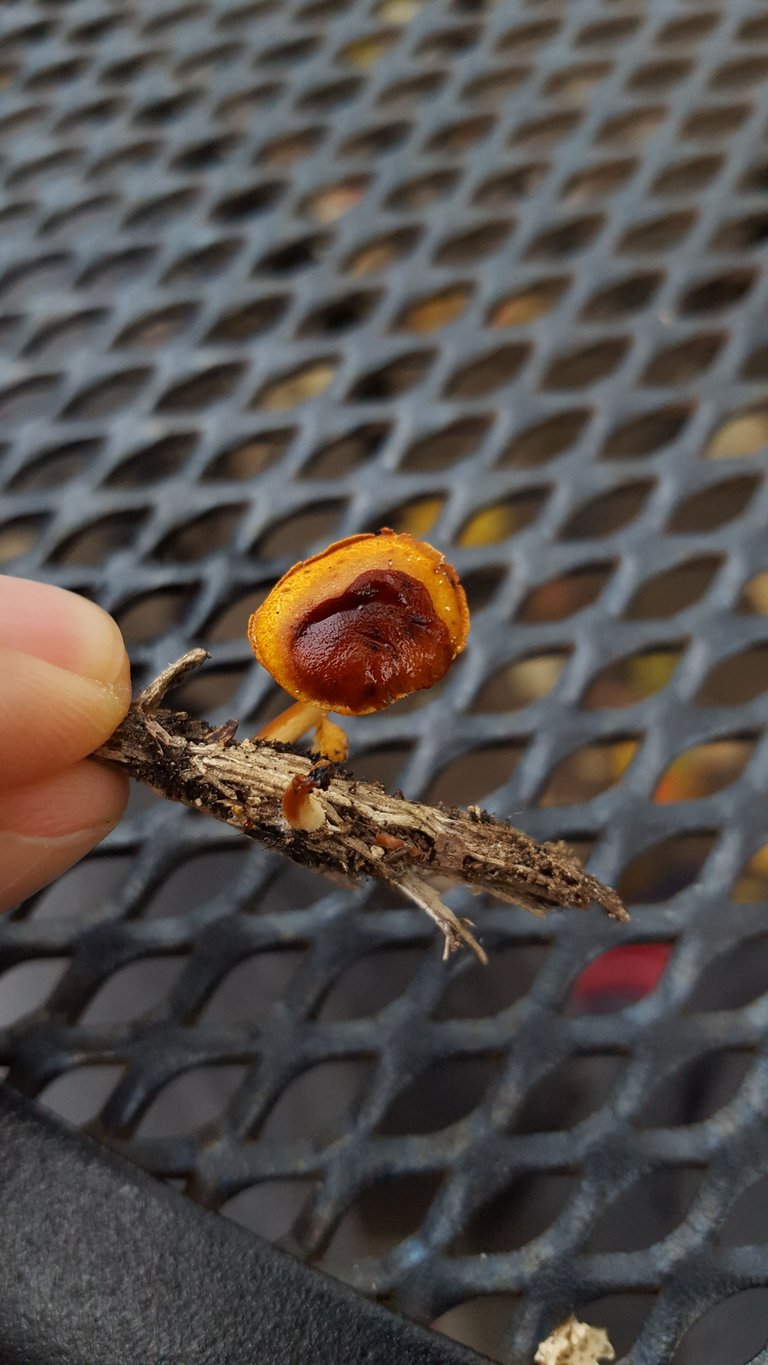
Here's what KOH does to the cap
A browning reaction - all well and good - but also a trait shared by the two candidate species.
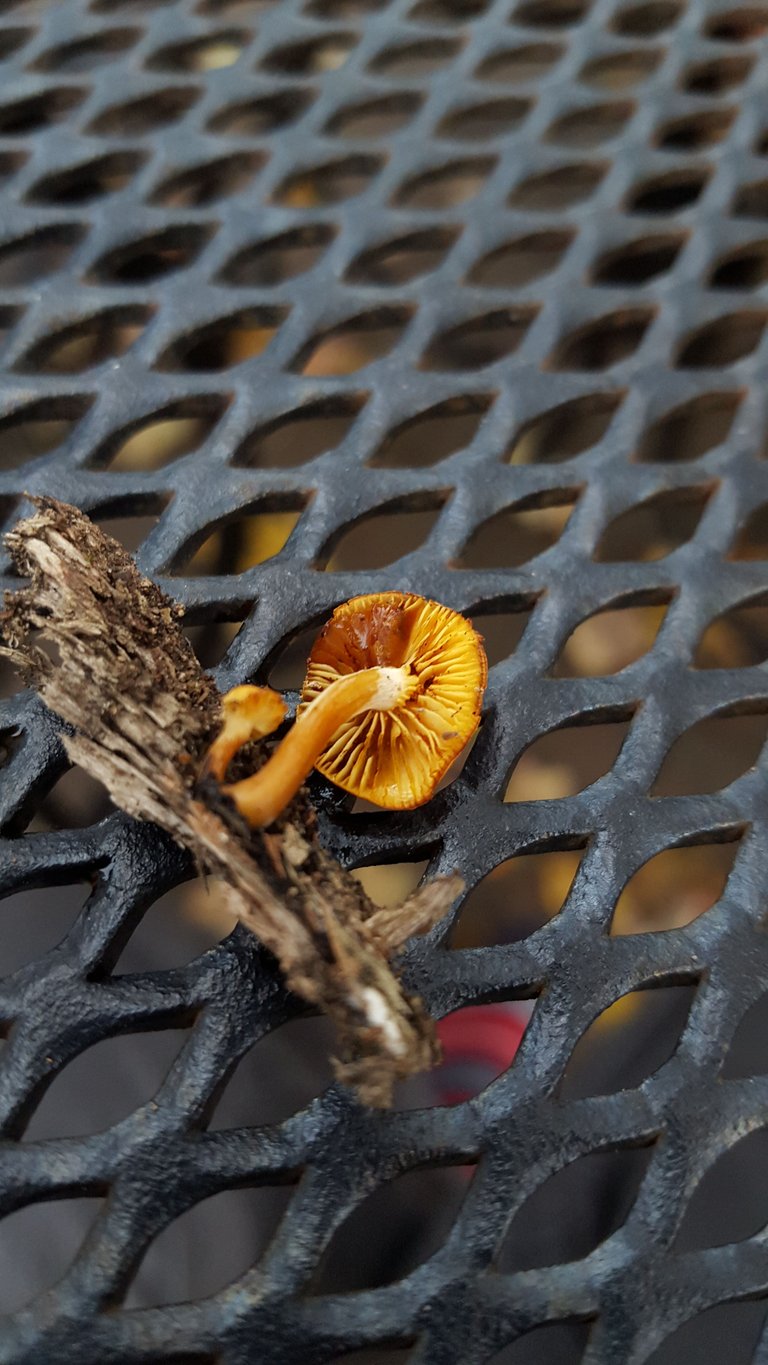
Same thing on the gills
There are two traits that primarily distinguish F.velutipes and G.marginata. The former has a white spore print while the latter has a brown spore print. Additionally G.marginata usually has an annulus or veil remnant on its stem. However the annulus does not always stick around.
This is why Tom Volk advises all eaters of F.velutipes to spore print every cap collected.
A single brown printed cap, in this case, could mean the difference between life and death.
Now, as I said, I wasn't able to retrieve a spore print from this specimen. However I did take one of the gills and put it under microscope. Then I measured some of the spores still remaining inside of the gill tissue.
Take a look
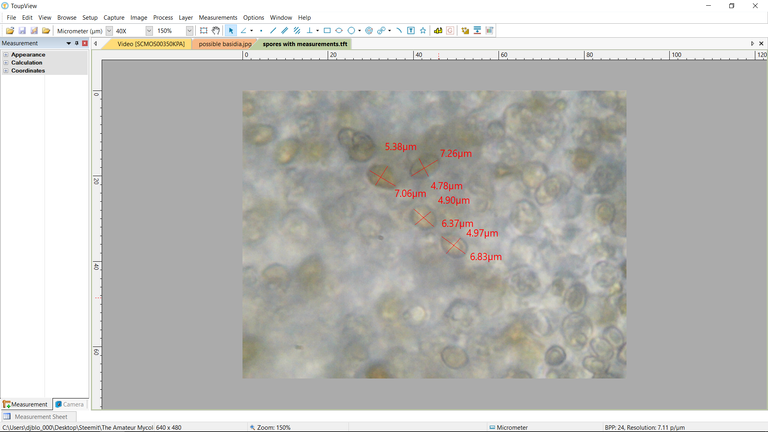
This reveals very little
The spores seem like they may bear a darker color when mature, although there's no way to know for sure without a print or a better microscope. They also seem slightly fatter in the middle compared to photos of F.velutipes spores I've seen. Importantly the spores, insofar as I see them here, are also consistent with G.marginata.
I also caught sight of what I think are a couple of basidia
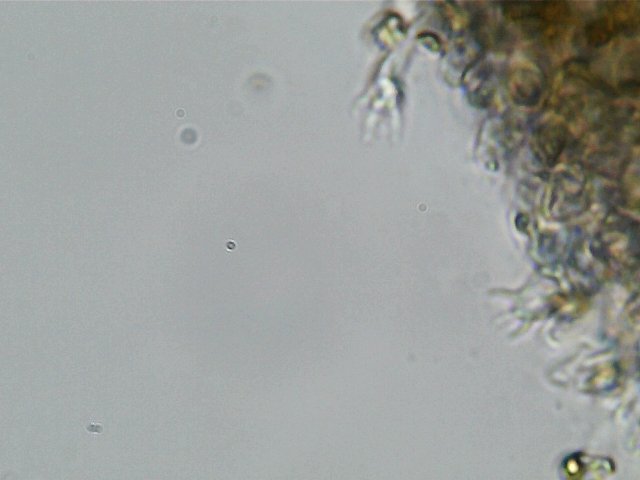
They appear to bear 3 sterigmata, but that could be wrong as well given I only have two samples.
Kuo says that G.marginata usually has 4 pronged basidia and sometimes 2 pronged, but makes no mention of 3 prongs. This might push back to F.velutipes, except no one mentions the basidia of that mushroom.
Which leaves us precisely no where. Without a spore print, and with a series of traits that push in multiple possible directions, I don't actually have any idea what mushroom this is. It could easily be something totally different than either of the two species I've considered.
The reason this is noteworthy is because, despite all the empirical analysis being fundamentally unenlightening, I still feel intuitively that this is F.velutipes!
Even though I don't eat my finds, I still get attached to certain species based on broad pattern recognition. This knee jerk response to species identification frequently leads me astray, an example of which will talk about more next post.
But for now, the lesson is straight forward: always remain objective and devoted to empirical observations when it comes to mushroom identification. Don't allow your unconscious or conscious biases to overcome what you know, or to fill in gaps where critical information is missing.
To do so is easy and tempting - to be honest, it's probably human nature - but it is also totally irresponsible and potentially disastrous.
THIS POST IS NOT INTENDED FOR FORAGING PURPOSES AND TO USE IT FOR THOSE PURPOSES WOULD BE DANGEROUS. DO NOT HUNT WILD MUSHROOMS WITHOUT RELYING ON A COMBINATION OF PROFESSIONAL FIELD GUIDES, IN PERSON PROFESSIONAL GUIDANCE, OR IN PERSON GUIDANCE BY SOMEONE TRUSTWORTHY WHO HAS COPIOUS LOCAL, SPECIALIZED MUSHROOM HUNTING EXPERIENCE. FAILURE TO DO SO CAN RESULT IN GRIEVOUS PERSONAL HARM OR DEATH.
Photos Are My Own
Microscopic photos were taken using an AMScope M150B entry level microscope. If you use microscopes, I'm quite sure you've never heard of this model - but its cheap and available on Amazon. The camera lens is also AMScope, MD35 - by far their crappiest microscope camera. But, as we will confirm on Thursday, still capable of material, relevant, and in some cases, dispositive, data collection. Lastly it should be noted that the precise magnifications are not easily deduced using the camera - but based on relative spore sizes compared to known microscopic photos from Kuo and other sources, I estimate 40, 100 and 400x.
Information Sources
[1]Kuo, M. (2013, February). Flammulina velutipes. Retrieved from the MushroomExpert.Com
[2]Kuo, M. (2016, July). Galerina marginata. Retrieved from the MushroomExpert.Com
[3]Tom Volk on F.velutipes
[4]Tom Volk on G.autumnalis
[5]Messiah College on F.velutipes
[6]First Nature on G.marginata
I have a great thinking about Mashroom..
Mushroom walks into a bar. Bartender says, "We don't serve mushrooms." Mushroom says, "But I'm a 'fun guy.'" Bartender says, "I just said we don't serve fungi." Mushroom says, "No, no, not 'fungi,' 'fun guy.' I made a pun." Bartender says, "Get the fuck out of my bar."
Hahaha
And also A mushroom, a pickle and a penis were talking about their awful lives. The mushroom said my life sucks, when i get big and fat they cut me up and cook me. The pickle said when I get big and fat they cover me in vinegar & throw me in a jar.
I love that this one isn't even finished - these comments are hilariously wierd.
I have been foraging for food off and on for most of my life, but you just mentioned many of the reasons I have never and will never try to forage mushrooms. I'd rather inoculate than take the risk.
I love mushrooms and forgae frequently for my own knowledge and entertainment - but as a bona fide hypochondriac, I can rarely bring myself to eat a wild mushroom, even after I've confirmed it down to a microscopic level. This is not entirely the posotion of a rational actor, but I totally get people's hesitance.
Thankfully mycology can be widely and completely enjoyed without being a mycophage!
haha mycophage. i love it. I assume you were making a play on the work macrophage. According to dictionary.com the meaning of mycophage my·co·phage (mī'kə-fāj')
n.
A virus that infects fungi.
It is that - as well any animal that feeds on fungi . As usual with online dictionaries, it seems to depend on your source. :)
Mind blown ;) Always great to learn something new!
Amazing mushrooms. Very beautiful photos. Thank you for sharing and keep up the good work :)
Thank you for that!
Your photos are always on-point. Thanks for sharing your exploration.
Thanks for the support!
regards. STEEM ON !.
- Critic-on
Thanks @critic-on -lovin that goat
it's a sheep, it's called federica ... lol
Oops - sorry - please send my apologies federica for my mistaking her species. Clearly I dont have much of an eye for the goat/sheep distinction - fits with this post.
Quiet she does not understand our language hahaha
Holy Cow @dber - this is some great info! I was looking into learning how to spot edible mushrooms. Upvoted, following, and resteemed
There are a wealth of resources available for free online - as well as tons of local mycologucal societies and meetups - and guides for basically every region in the world. It's a fun hobby and very easy to get started with in some detail!
excellent post I follow you, if you want you can follow me